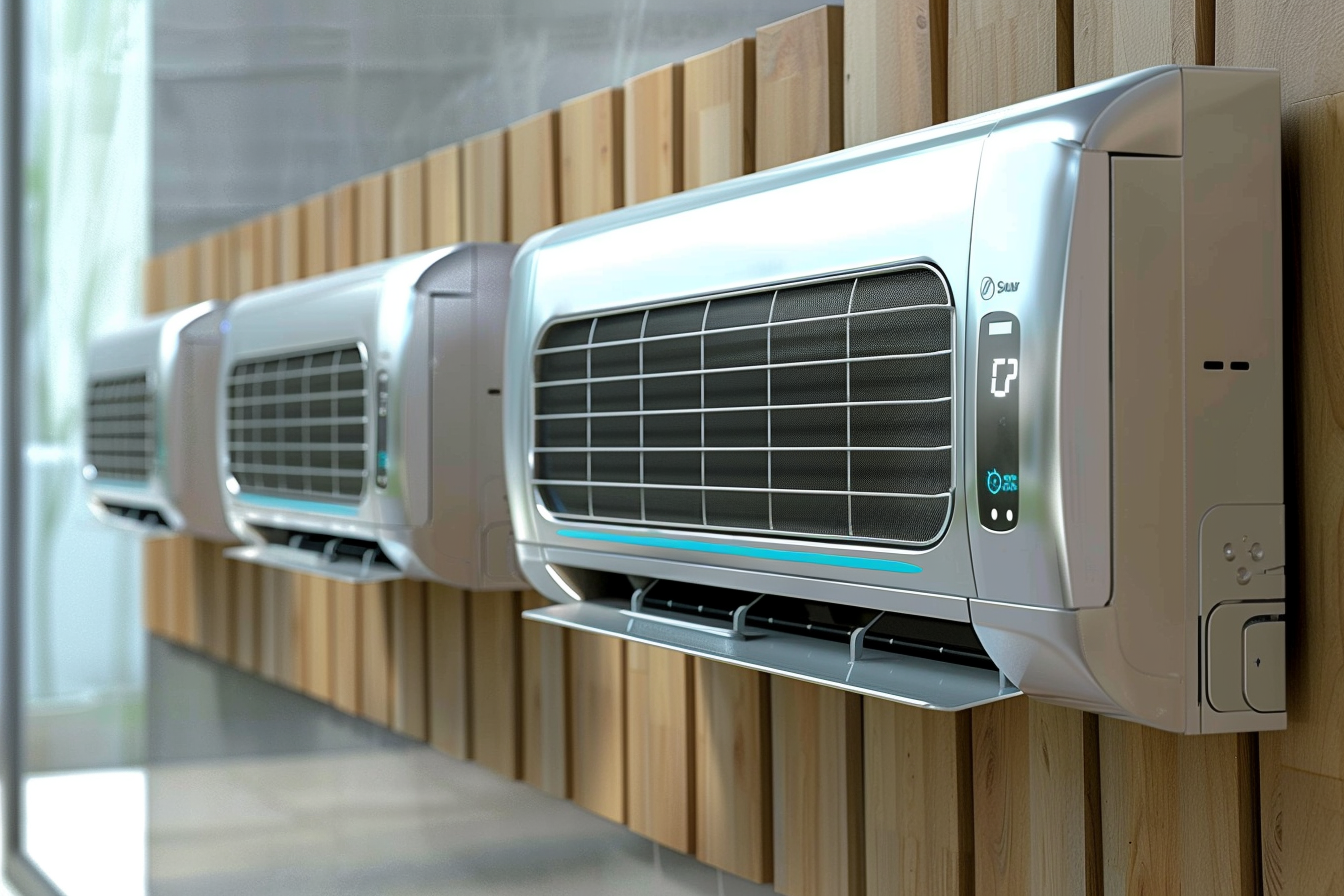How Ceiling Fans Work and Why They Keep Rooms Comfortable
Ceiling fans are a very common part of many homes. They move air around a room and help it feel more even. In this article, we will explore how ceiling fans spin, the different types you can find, and how they are used in homes all around the world...

What Makes Ceiling Fans Effective for Home Cooling
Ceiling fans create comfort through air movement rather than actually lowering room temperature. When fan blades rotate, they push air downward, creating a breeze that increases evaporation from skin surfaces. This evaporation process produces a cooling sensation similar to natural wind, making occupants feel 3-8 degrees cooler than the actual room temperature. The moving air also helps distribute heated or cooled air more evenly throughout a room, reducing hot spots and improving overall comfort levels.
The effectiveness of home cooling through ceiling fans depends on blade size, motor quality, and installation height. Larger blades move more air at lower speeds, creating better circulation with less noise. Proper installation typically requires 8-10 feet of ceiling height for optimal performance, with fans positioned 7-9 feet above the floor.
Types of Energy Efficient Fans Available
Modern energy efficient fans consume significantly less electricity than older models while providing superior performance. DC motor ceiling fans represent the most efficient option, using up to 70% less energy than traditional AC motor fans. These fans often include variable speed controls and can operate at very low speeds for gentle air movement.
Brushless DC motors run cooler and quieter than conventional motors, lasting longer with minimal maintenance requirements. Many energy efficient models feature LED lighting integration, further reducing overall energy consumption compared to separate light fixtures. Smart ceiling fans with programmable controls and sensors can automatically adjust speed based on room temperature and occupancy.
Indoor Air Circulation Benefits Beyond Cooling
Beyond temperature comfort, ceiling fans significantly improve indoor air circulation by preventing stagnant air pockets and reducing humidity levels. Proper air movement helps distribute fresh air from HVAC systems throughout rooms, improving overall air quality. During winter months, reversing fan direction allows warm air trapped near ceilings to circulate downward, improving heating efficiency.
Enhanced indoor air circulation from ceiling fans can reduce reliance on air conditioning systems, potentially lowering energy bills while maintaining comfort. The constant air movement also helps prevent moisture buildup that can lead to mold growth and indoor air quality issues, particularly in bathrooms, kitchens, and basements.
Different Ceiling Fan Types for Various Spaces
Ceiling fan types vary significantly based on intended use and installation location. Standard ceiling fans work well in most living areas with adequate ceiling height, while low-profile or hugger fans suit rooms with lower ceilings. Outdoor ceiling fans feature weather-resistant materials and sealed motors for porch, patio, and gazebo applications.
Industrial-style ceiling fans provide powerful air movement for large spaces like warehouses or great rooms, often featuring metal construction and larger blade spans. Decorative ceiling fans combine functionality with aesthetic appeal, available in numerous styles from traditional to contemporary designs. Specialty fans include bladeless models, dual-motor designs for extra-large rooms, and compact fans for small spaces.
Installation and Optimal Placement Considerations
Proper ceiling fan installation requires secure mounting to ceiling joists or approved ceiling boxes rated for fan weight and movement. Fans should be positioned at least 18 inches from walls and 24 inches from other fixtures to ensure adequate clearance for safe operation. Room size determines appropriate blade span, with 42-48 inch fans suitable for rooms up to 225 square feet, and larger fans needed for bigger spaces.
Electrical requirements vary by model, with some fans requiring separate wall controls while others include remote controls or smart home integration. Professional installation ensures proper wiring, secure mounting, and optimal positioning for maximum air circulation effectiveness. Regular maintenance includes blade cleaning, motor lubrication when specified, and periodic balance adjustments to prevent wobbling.
| Fan Type | Typical Price Range | Key Features |
|---|---|---|
| Standard AC Motor | $50 - $200 | Basic operation, multiple speeds, traditional design |
| DC Motor | $150 - $500 | Energy efficient, quiet operation, variable speeds |
| Smart Ceiling Fan | $200 - $600 | App control, scheduling, sensor integration |
| Outdoor/Weather Resistant | $100 - $400 | Moisture protection, durable materials |
| Industrial/Commercial | $300 - $800 | High airflow, large blade span, heavy-duty construction |
Prices, rates, or cost estimates mentioned in this article are based on the latest available information but may change over time. Independent research is advised before making financial decisions.
Maximizing Ceiling Fan Efficiency and Performance
Achieving optimal ceiling fan performance requires attention to blade angle, motor speed, and seasonal operation adjustments. Most efficient ceiling fans operate at medium speeds for daily use, with high speeds reserved for particularly warm conditions. Regular cleaning of fan blades maintains optimal airflow and prevents dust buildup that can affect balance and performance.
Seasonal direction changes maximize year-round benefits, with counterclockwise rotation for summer cooling and clockwise rotation for winter heating assistance. Combining ceiling fan operation with programmable thermostats allows for higher cooling settings while maintaining comfort through air movement, resulting in significant energy savings throughout cooling seasons.
Ceiling fans represent an effective, energy-efficient solution for improving home comfort through enhanced air circulation and cooling effects. By understanding how these fixtures work and selecting appropriate types for specific spaces, homeowners can create more comfortable living environments while potentially reducing overall energy consumption for climate control.




